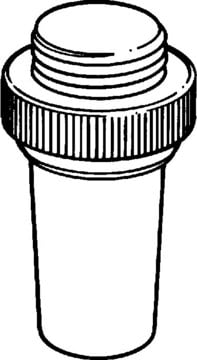04936
O-(6-Chlorobenzotriazol-1-yl)-N,N,N′,N′-tetramethyluronium hexafluorophosphate
≥98.0% (HPLC)
Synonyme(s) :
1-[Bis(dimethylamino)methylen]-5-chlorobenzotriazolium 3-oxide hexafluorophosphate, N,N,N′,N′-Tetramethyl-O-(6-chloro-1H-benzotriazol-1-yl)uronium hexafluorophosphate, HCTU
Sélectionner une taille de conditionnement
Sélectionner une taille de conditionnement
About This Item
Produits recommandés
Niveau de qualité
Essai
≥98.0% (HPLC)
Forme
powder
Capacité de réaction
reaction type: Coupling Reactions
Impuretés
≤0.5% water
Pf
185-190 °C
Application(s)
peptide synthesis
Groupe fonctionnel
amine
chloro
Chaîne SMILES
ClC1=CC=C(N([C+](N(C)C)N(C)C)N=[N+]2[O-])C2=C1.F[P-](F)(F)(F)(F)F
InChI
1S/C11H15ClN5O.F6P/c1-15(2)11(16(3)4)18-17-10-7-8(12)5-6-9(10)13-14-17;1-7(2,3,4,5)6/h5-7H,1-4H3;/q+1;-1
Clé InChI
ZHHGTMQHUWDEJF-UHFFFAOYSA-N
Application
Autres remarques
Mention d'avertissement
Warning
Mentions de danger
Conseils de prudence
Classification des risques
Skin Sens. 1A
Code de la classe de stockage
11 - Combustible Solids
Classe de danger pour l'eau (WGK)
WGK 3
Point d'éclair (°F)
Not applicable
Point d'éclair (°C)
Not applicable
Faites votre choix parmi les versions les plus récentes :
Déjà en possession de ce produit ?
Retrouvez la documentation relative aux produits que vous avez récemment achetés dans la Bibliothèque de documents.
Les clients ont également consulté
Active Filters
Notre équipe de scientifiques dispose d'une expérience dans tous les secteurs de la recherche, notamment en sciences de la vie, science des matériaux, synthèse chimique, chromatographie, analyse et dans de nombreux autres domaines..
Contacter notre Service technique













